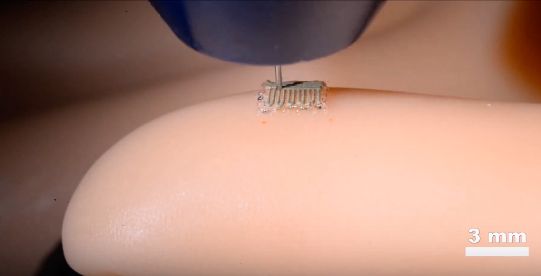Engineers in the US have unveiled a revolutionary technique for 3D printing electronic sensors that could give robots the sense of touch.
The team behind the breakthrough say it could pave the for applications in robot mobility and even the operating theatre.
Michael McAlpine, the lead author of the study and a mechanical engineer at the University of Minnesota, said:
“Putting this type of ‘bionic skin’ on surgical robots would give surgeons the ability to actually feel during minimally invasive surgeries, which would make surgery easier instead of just using cameras like they do now.
“These sensors could also make it easier for other robots to walk and interact with their environment.”

The discovery also marks a step forward in printing electronic on human skin.
“While we haven’t printed on human skin yet, we were able to print on the curved surface of a model hand using our technique,” McAlpine said. “We also interfaced a printed device with the skin and were surprised that the device was so sensitive that it could detect your pulse in real time.”
While conventional 3D printers print liquid plastic that is too hot and rigid for skin, these sensors stretch up to three times their original size.
The multifunctional printers print several layers to make the sensors as stretchy as possible.
“This is a completely new way to approach 3D printing of electronics,” McAlpine said.
